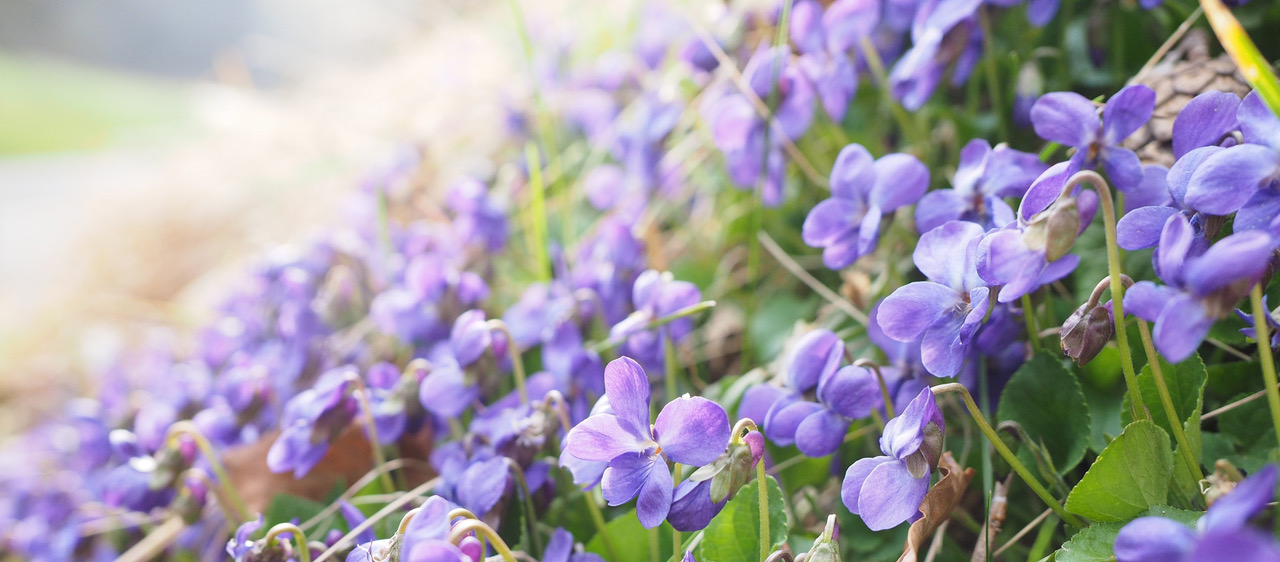
Viriditas: Musings on Magical Plants
Viola odorata
By Margaux Crump
Sign up for our monthly newsletter!
As winter melts into spring, my thoughts are full of violets. They beckon to me, their vibrant flowers radiating like ultraviolet beacons amongst the early spring greens. As a tea, tonic, syrup, or salad, their verdant sweetness, fresh on my tongue, is rejuvenating after the cold season. Quite simply, violets make me happy.
Known for their affinity with the heart, the uplifting and gentle manner of violets has a long magico-medicinal history.
While the genus Viola holds over 500 species, historic magical writings most often concern Viola odorata, native to Europe and Asia and known for its ephemeral perfume. The common North American Viola papilionacea and Viola sororia, though less fragrant than Viola odorata, are just as rewarding to work with.
Violet is a shameless floral flirt.
Commonly called sweet violet, Viola odorata brings you to your knees. Low growing, they require a shift in perspective to greet them and receive their fragrance. Once your nose is to the ground, violet playfully teases you with a scent that is both intoxicating and elusive; ionone, the chemical responsible for violet’s sweetness, stimulates your olfactory receptors, but quickly inhibits them, temporarily vanishing your sense of smell. A few breaths later and you can sense violet’s perfume anew. Violet is a shameless floral flirt.
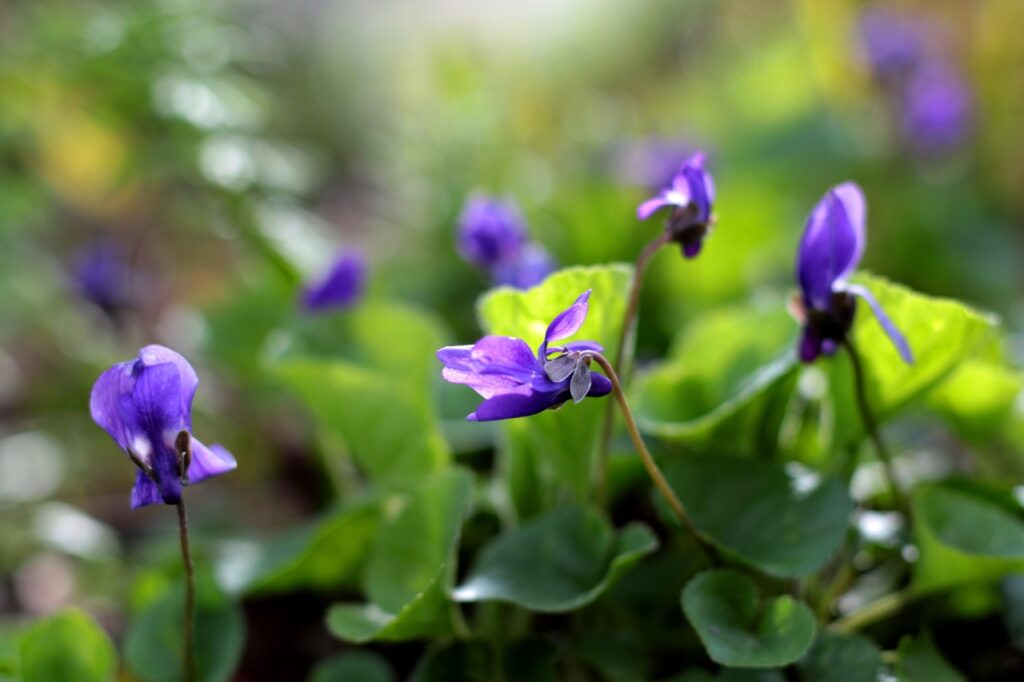
Considered cooling and moistening, violet has anti-inflammatory, cleansing, and lymphatic properties. It is a well loved herb used in many traditional practices including Greek, Indian, Chinese, and European medicine. Ibn Sina recommended violet for cooling hot coughs and as a gentle purgative;1 Hildegard von Bingen prescribed violet oil for fogginess of the eyes and violet spiced wine for melancholy that affects the lungs;2 Nicholas Culpeper found violet effective in any pains arising from heat and all diseases of the lungs.3 Recent research on V. odorata demonstrates that it can inhibit tumor growth4 and suppress asthmatic coughs.5
In the tradition of natural magic, violet is aligned with the planet Venus and all matters of the heart, passion, and desire as personified by the goddess of love. This attribution is usually supported by violet’s heart shaped leaves and seductive scent. Intriguingly, when plotted geocentrically, Venus’ eight-year orbit cycle creates a five-petaled or pentagram pattern, mirrored in violet’s five-petaled flower. Furthering this connection to desire, violet’s springtime chasmogamous flowers readily cross-breed with the help of pollinators. Etymologically, chasmogamous derives from the Greek words chasma (opening) and gamos (marriage). This propensity to hybridize reflects their open-hearted, venereal spirit.
Violet’s subterranean self-fertilization complements their aboveground promiscuity and expands how we can understand the power of love
Under the power of Venus, Agrippa provides a recipe for a suffumigation with violet to induce divine inspiration and clear sight, but rather than the leaves and flowers, he works with the roots. He details: “…they say that fumes made with Lin-seed, and Flea-bane seed, and roots of Violets, and Parsly, doth make one to fore-see things to come, and doth conduce to prophecying”.6 This recipe is also mentioned in the 13th C Liber Juratus.
As we move our gaze underground to the roots of V. odorata, we find violet’s hidden blooms. In the fall, violet produces cleistogamous flowers which remain buried and solely self-pollinate. Etymologically, cleistogamous derives from the Greek words cleistos (closed) and gamos (marriage). Violet’s subterranean self-fertilization complements their above ground promiscuity and expands how we can understand the power of love. In addition to Venus, violet is also linked to the Virgin Mary and symbolizes purity, chastity, and modesty. This is illuminating when we consider violet’s cleistogamous flowers, that do not open to a partner, as a marriage to oneself. Thus, V. odorata troubles our present conception of virginity to reveal a more ancient understanding of the word. For instance, the Latin virgo means virgin, but it also simply means maiden, and the Greek word for virgin or maiden, parthenos, roots the Latin word parthenogenesis, meaning self-fertilizing. In this sense, virginity transforms into sovereignty and wholeness in one’s self, a system that continues to reproduce without external influence. Through their distinct biology and mythology, violets embody the many manifestations of love—whether of self or others.
Continuing our underworld journey, violets are also known as flowers of the dead and can be used to protect against malefic spirits. According to Homer, Persephone Kore was abducted and taken to Hades while she was picking fragrant narcissus, roses, and violets. There the Kore maiden becomes a chthonic goddess, dread(ed) Persephone, who must spend six months aboveground and six months below. Her myth helps to explain the changing of the seasons, but it also helps us to understand violet’s dynamism and duality.
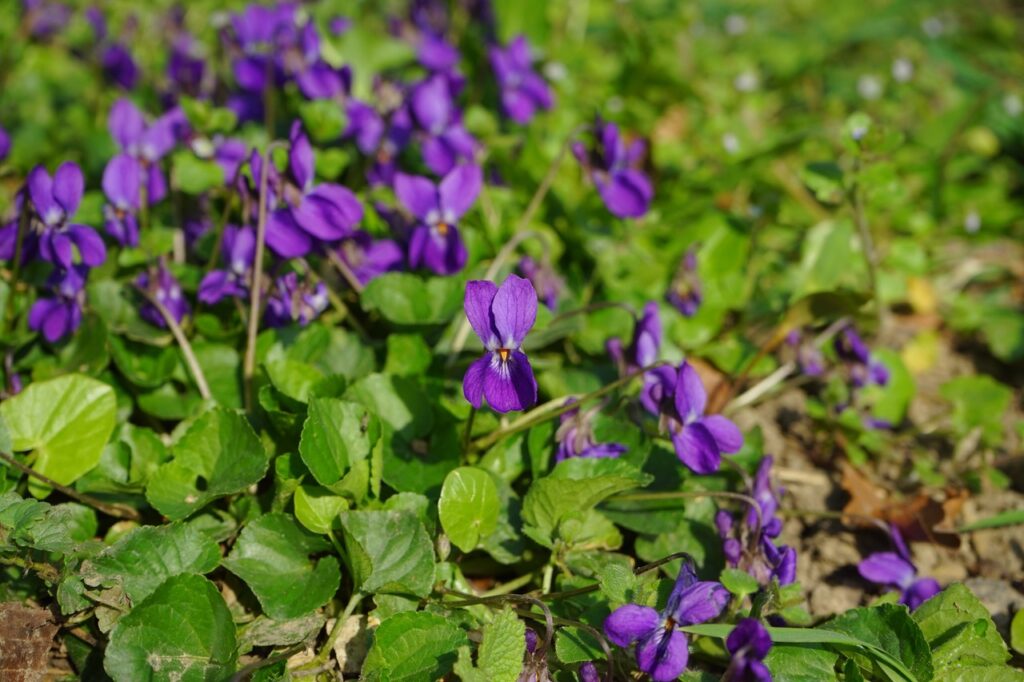
One of the most fruitful ways to understand the power of violet is to cultivate your own personal relationship with them. Something as simple as carefully sitting with an open mind next to where they are growing can provide a wealth of information. How do you feel in their presence? What do you sense in your body? What images, memories, or thoughts appear for you? Another way to meet violet is to incorporate their fresh leaves and flowers in salads or as a garnish on meals. In the spring, I love to apply violet oil after bathing. As a lymphagogue, violet gently revitalizes my system after the quiet lull of winter. If this piques your interest, you can make your own infused oil. First, gather fresh violet in the morning after the dew has evaporated. Allow the flowers and leaves to wilt to help release excess water. You want there to be as little water as possible to prevent mold. Because violet naturally has a higher water content, I prefer to infuse the oil over low heat rather than allowing it to infuse in the sun for several weeks. To begin, brush off any debris and roughly chop your plant material. Place it in a pot. Cover it with your oil of choice (I like jojoba). Heat the oil to around 100–110℉ for a day, leaving the pot uncovered to allow excess moisture to evaporate. Allow the oil to cool and strain out all plant material using a cheesecloth or something similar. You can extend the oil’s longevity by storing it in the refrigerator. Violet oil can be used on the body and as an anointing oil for magical workings.
Margaux Crump (b.1989, USA) is a gardener and interdisciplinary artist exploring the entanglements between ecology, spirituality, and power. She is currently investigating the phenomena of unseen worlds, from the microscopic to the parallel mythic realms that surround us. Follow her on instagram @margauxcrump
Sources
1 Ibn-Sina, Canon of Medicine Book II: Materia Medica, trans. Department of Islamic Studies Hamdard University. (New Dheli: Jamia Hamdard Printing Press, 1998), accessed Apr 15, 2023, https://www.naimh.com/_files/ugd/ee530d_32edca193e5e4e039a0a2e27171c2a65.pdf.
2 Hildegard. Hildegard Von Bingen’s Physica: The Complete English Translation of Her Classic Work on Health and Healing, trans. Priscilla Throop. Rochester, VT: Healing Arts Press, 1998.
3 Culpeper, Nicholas. Culpeper’s Complete Herbal & English Physician. Bedford, MA: Applewood Books, 2007. First published 1653.
4 Alipanah H, Bigdeli MR, Esmaeili MA. Inhibitory Effect of Viola odorata Extract on Tumor Growth and Metastasis in 4T1 Breast Cancer Model. Iran J Pharm Res. 2018 Winter;17(1):276-291. PMID: 29755559; PMCID: PMC5937098.
5 Qasemzadeh, M., Sharifi, H., Hamedanian, M., Gharehbeglou, M., Heydari, M., & Sardari, M. et al. (2015). “The Effect of Viola odorata Flower Syrup on the Cough of Children with Asthma.” Journal Of Evidence-Based Complementary & Alternative Medicine, 20(4), 287-291, accessed on Apr 15, 2023, https://doi.org/10.1177/2156587215584862.
6 Heinrich Cornelius Agrippa, Three Books of Occult Philosophy: Book One – Natural Magic, trans. Willis F Whitehead. Chicago: Hahn & Whitehead, 1898. First published 1531.
Plantings

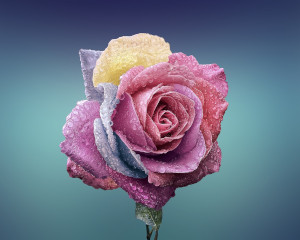
Why Your Roses Smell Nice
By Maxine Singer
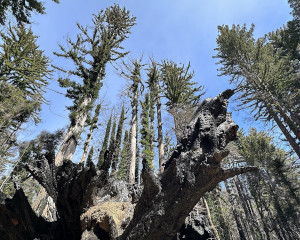
The Regenerating Power of Big Basin’s Redwoods
By Gayil Nalls
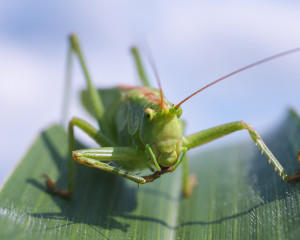
A Warmer Planet, Less Nutritious Plants and … Fewer Grasshoppers?
By Amber Dance
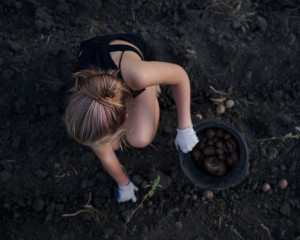
Seeing Ourselves in the Soil
By Jake Eshelman
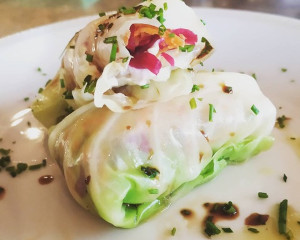
Eat More Plants Recipes:
Cabbage Roll with Cannellini Bean Hummus
By Sabina Cobbe

As Ireland transitions from the rich, smoky scent of peat-burning to a more sustainable future, its olfactory heritage is evolving. What will become the next iconic aromatic symbol of Ireland?
Click to watch the documentary trailer.


